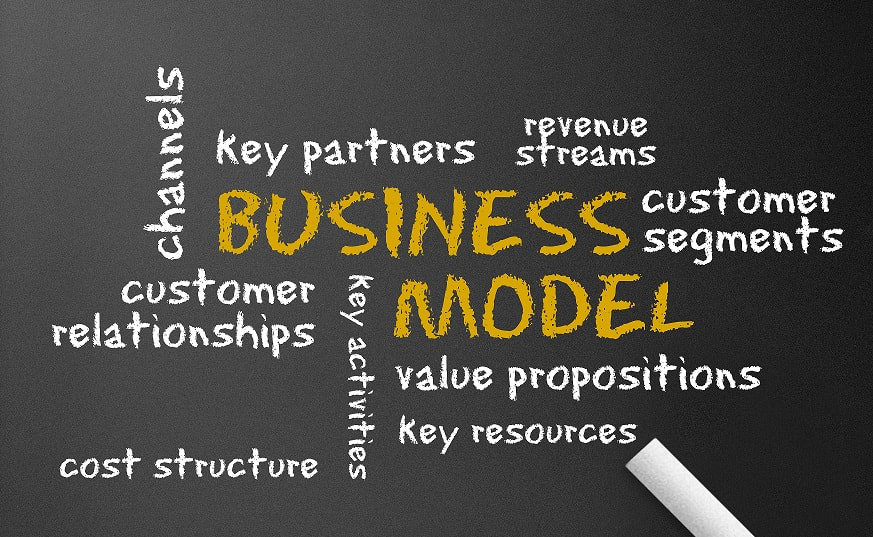|
Despite the economic impact and human toll of the coronavirus pandemic, I can't think of a better time to share the results of my research on strategic agility. Firms that are agile with their business strategies are likely to fare better than others during these turbulent times. Manufacturers shifting to ventilators, restaurants providing innovative curbside service, professional services moving online...the examples abound. I hope this article provides some useful guidance for companies trying to weather the storm, as well as the calm. I recently had the opportunity to talk to a group of entrepreneurs about the role of business models in value creation. I started with Amit and Zott’s (2010) academic definition of the business model: a system of interdependent activities connecting customers, partners, and suppliers to create and appropriate value. The last two words there are quite important; they mean we make money. I went on to the business model canvas tool popularized by Osterwalder and Pigneur (2010). They describe the business model as the rationale for how organizations create, deliver, and capture value. Very similar!
From there, my plan was to go into some example business models. I did a quick literature review to see what was new beyond the ten or so I had in mind. How many business models do you think I found? Before reading on, please take a guess. So, here’s my list: Brick & Mortar, Bricks & Clicks, Direct Sales, Rental, Subscription, Managed Service, X as a Service, Premium, Freemium, Franchise, OEM, Value Added Reseller, White Label, Bespoke, Long Tail, Bundled, Unbundled, Razor & Blades (same as Printers & Ink), Advertiser, Integrator, Honest Broker, Retail, Wholesale, Fractional Ownership, Time Share, Revenue Share, Brokerage, Commission, Self Service, Pay As You Go, Pay What You Can, Open Source, Crowd Based, and Auction. In case you weren’t counting, that’s 34 business models. And there are plenty more. Each of these models is really a pattern that can be replicated and blended across different industries. How about a bespoke, value added reseller, subscription model in the entertainment industry? We would stream custom tailored Netflix episodes based on you or your family's interests or demographics for only another $30/month. Or maybe there’s a need for white-labeled, self-service fast food. You walk into the sandwich shop, make your own favorite subs, and wrap them in paper printed with your company’s logo for the client meeting at lunchtime. The business model list is really endless. So, the next time you’re debating the features or pricing of your new product or service, remember to debate the business model too. You may just find more flexibility and value there. The concept of agility in business is compelling. Just like the athlete on the playing field, what company would not want to be able to change speed or direction quickly in order to score on new opportunities? The ability to pivot to new markets, products, or business models could be an important source of competitive advantage, which is why I chose this topic for my doctoral dissertation. But more on that in a future post. Today, I thought I would provide a brief history of agility in the business context.
Researchers at the Iacocca Institute are often cited as the first to use the term “agile manufacturing” in a study sponsored by the Office of Naval Research in 1991. They argued that agility rather than mass production represented the future for 21st Century manufacturing. They defined agile manufacturing as rapid product creation, development, and modification made possible by interdisciplinary product teams, modular product designs, and flexible and affordable production processes and equipment. Agile manufacturing was extensively studied during the 1990s and early 2000s, and the concept was broadened to include supply chain agility and IT agility. After all, to be truly agile, the supply chain underlying manufacturing and the IT systems controlling it must also be agile. But the spread of agility does not stop there. In the software domain, agile methodology was introduced in 2001 by a group of leading software developers in their proclamation entitled The Agile Manifesto. They articulated a set of values and principles to guide the development of software in a more responsive and cost-effective manner. The success of agile development led to the need for agility in project management too, as agile software projects must still be managed. Now there is an Agile Certified Practitioner (ACP) certification available from the Project Management Institute. From these technical domains, agility found its way into the broader fields of Organizational Behavior and Strategic Management in the 2000s and 2010s. Organizational agility addresses the ability of the organization itself (people, structure, activities) to be flexible and reconfigurable. It has been defined to involve a culture of innovation, empowerment, tolerance for ambiguity, vision, change management, communication, market analysis and response, operations management, structural fluidity, and learning organization. Strategic agility addresses agility at the highest level of the organization, that of the company’s strategy. Strategic agility is the firm’s capability to dynamically change its plan for achieving sustained competitive advantage, including its market focus, product mix, resource allocation, and business model. While perhaps the pinnacle of agility, strategic agility also appears to be the most complex. How can a firm be both strategic (long-term, committed) and agile (short term, changeable) at the same time? Current studies, including my own, are now empirically investigating strategic agility with hopefully more compelling findings yet to come. |


